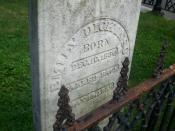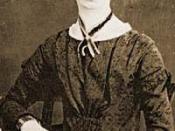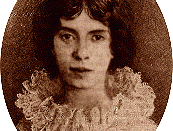Emily Dickinson grew up in a formidable Puritan family in Amherst, New England. In the beginning she was as much like her peers as any other child. As the years went on however, it would become clear that she was a singular person. The older Emily became, the more reluctant she became to leave home for even an hour at a time. During the last ten years of her life she refused to leave her house or garden at all, and her travels had barely taken her beyond the boundaries of Amherst. For such a recluse, amazingly Emily was also a passionate and intense poet. Her poetry exposes a surprising degree of insight and perception for a person who scarcely left the walls of her bedroom. A closer examination of two of Dickinson's poems, "I Never Saw the Moor" and "Exaltation Is the Going", reveals striking similarities in form, subject, and philosophy.
Both poems have unmistakable similarities in meter, rhyme, and punctuation. The meter of each of the poems suggests the influence of many common Protestant Hymn books. Both the first and last lines of each of the poems have the exact same meter. The tone of each poem is concise, abrupt, and informal. Dickinson's unique style extends even further to her rhyming scheme, or lack thereof. In these poems, every other line utilizes slant rhymes: words that do not end the same, but can be twisted to sound so. For example, lines one and three in both poems use slant rhyming with end words such as "Moor" and "looks" while lines two and four of both poems rhyme in the conventional manner ending in words such as "Sea" and "be". Another similar aspect of the two poems is their unique punctuation. Oddly chosen words are capitalized, and slash marks...


